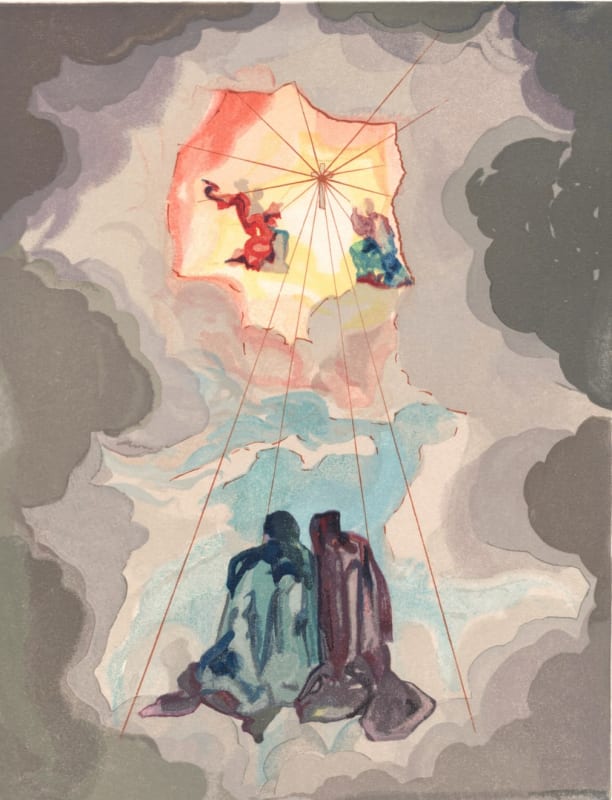The flamboyance, self-promotion and myth making would have in a lesser artist obscured his talent, but Dali became one of the leading figures in 20th modern painting and arguably the greatest of all the surrealists. He was more than a moustache and a few melting clocks, being extremely gifted both as a draughtsman and painter, and being involved in many other spheres including film, poetry and photography. He was close to Luis Bunel, Fedorico Garcia Lorca and Joan Miro.
In 1950 Dali was granted an audience with the Pope and encouraged by Papal approval the Italian government commissioned Dali to illustrate Dante Alighieri's epic and inspirational poem 'The Divine Comedy' to commemorate the 700th anniversary of their nation's greatest poet. This great work is held as a treasure of Italian literature and Dali such a controversial choice that the dispute eventually reached parliament and Dali's contract was duly cancelled. Typical of the man, he decided to carry on with the project anyway and assisted by the French publisher Joseph Foret he produced 100 stunning watercolours depicting Heaven, Hell, Purgatory and Paradise. Then under Dali's supervision they were interpreted as wood engravings. As many as 3500 woodblocks were produced by the master engraver Raymond Jacquet, with every step approved by Dali. It has been considered by many to be Dali's greatest graphic achievement.

